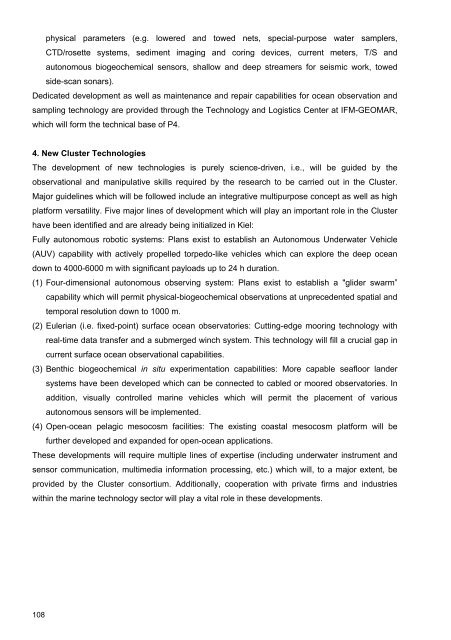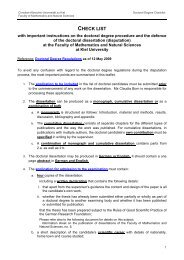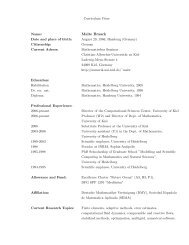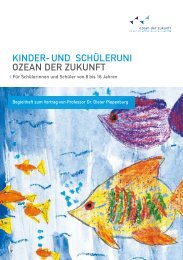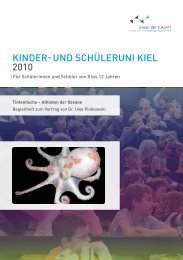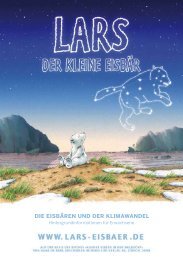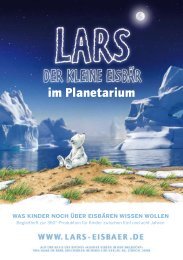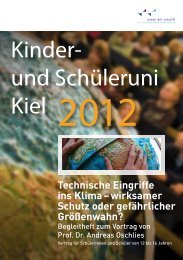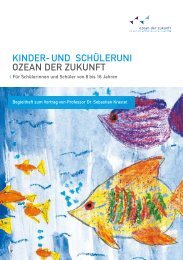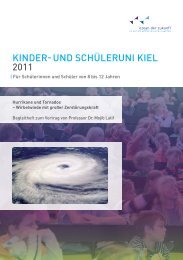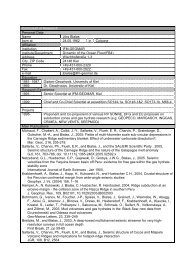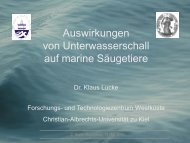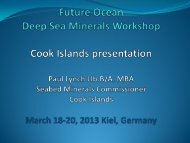Untitled - The Future Ocean
Untitled - The Future Ocean
Untitled - The Future Ocean
- No tags were found...
Create successful ePaper yourself
Turn your PDF publications into a flip-book with our unique Google optimized e-Paper software.
physical parameters (e.g. lowered and towed nets, special-purpose water samplers,CTD/rosette systems, sediment imaging and coring devices, current meters, T/S andautonomous biogeochemical sensors, shallow and deep streamers for seismic work, towedside-scan sonars).Dedicated development as well as maintenance and repair capabilities for ocean observation andsampling technology are provided through the Technology and Logistics Center at IFM-GEOMAR,which will form the technical base of P4.4. New Cluster Technologies<strong>The</strong> development of new technologies is purely science-driven, i.e., will be guided by theobservational and manipulative skills required by the research to be carried out in the Cluster.Major guidelines which will be followed include an integrative multipurpose concept as well as highplatform versatility. Five major lines of development which will play an important role in the Clusterhave been identified and are already being initialized in Kiel:Fully autonomous robotic systems: Plans exist to establish an Autonomous Underwater Vehicle(AUV) capability with actively propelled torpedo-like vehicles which can explore the deep oceandown to 4000-6000 m with significant payloads up to 24 h duration.(1) Four-dimensional autonomous observing system: Plans exist to establish a "glider swarm”capability which will permit physical-biogeochemical observations at unprecedented spatial andtemporal resolution down to 1000 m.(2) Eulerian (i.e. fixed-point) surface ocean observatories: Cutting-edge mooring technology withreal-time data transfer and a submerged winch system. This technology will fill a crucial gap incurrent surface ocean observational capabilities.(3) Benthic biogeochemical in situ experimentation capabilities: More capable seafloor landersystems have been developed which can be connected to cabled or moored observatories. Inaddition, visually controlled marine vehicles which will permit the placement of variousautonomous sensors will be implemented.(4) Open-ocean pelagic mesocosm facilities: <strong>The</strong> existing coastal mesocosm platform will befurther developed and expanded for open-ocean applications.<strong>The</strong>se developments will require multiple lines of expertise (including underwater instrument andsensor communication, multimedia information processing, etc.) which will, to a major extent, beprovided by the Cluster consortium. Additionally, cooperation with private firms and industrieswithin the marine technology sector will play a vital role in these developments.108


